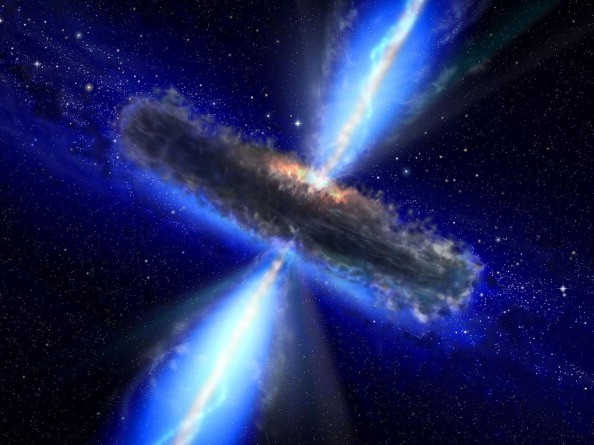Galaxies have often been associated with bright light and the colors and hues. However, nobody has understood why these galaxies fade out over a period of time and lose all their charm to turn dark and lifeless.
An international team of researchers, including the ones from the University of Oxford and University of Tokyo is now looking at the reason why galaxies get "turned off" over a period of time. Taking a recently discovered galaxy type called "red geyser" as their reference, the team is trying to figure out an explanation for dimming galaxies.
According to the researchers, these red geysers possess intense stellar winds that are powered by supermassive black holes with extremely low energy. These stellar winds heats up the abundant amount of gas present in the galaxy and thus prevents cooling and condensation to take place. The inhibition of these two processes prevents the galaxy from forming new stars.
The study, published in the journal Nature, answers the age-old question why new stars are not formed in a galaxy despite the presence of ample amount of gas in the galaxy.
"Stars form from the gas, a bit like the drops of rain condense from the water vapor. And in both cases one needs the gas to cool down, for condensation to occur," Michele Cappellari of the University of Oxford said in a press statement. "But we could not understand what was preventing this cooling from happening in many galaxies."
Cappellari further explained how modeling of motion of gas in the red geyser enabled the researchers to understand how the gas gets pushed away from the center of the galaxy, thus escaping its gravitational pull.
Thus, the mechanism of action of stellar winds revealed the phenomenon of gas heating and how it is kept from condensing to form new stars. The researchers made this breakthrough discovery by studying the red geyser candidates in 3D.
The data derived from the MaNGA galaxy survey enabled them to model the movement of gas within a galaxy and identify the course of the stellar winds. The researchers believe that their work explains how typical quiescent galaxies maintain their quiescence.
The following video explains how new stars are formed:



























